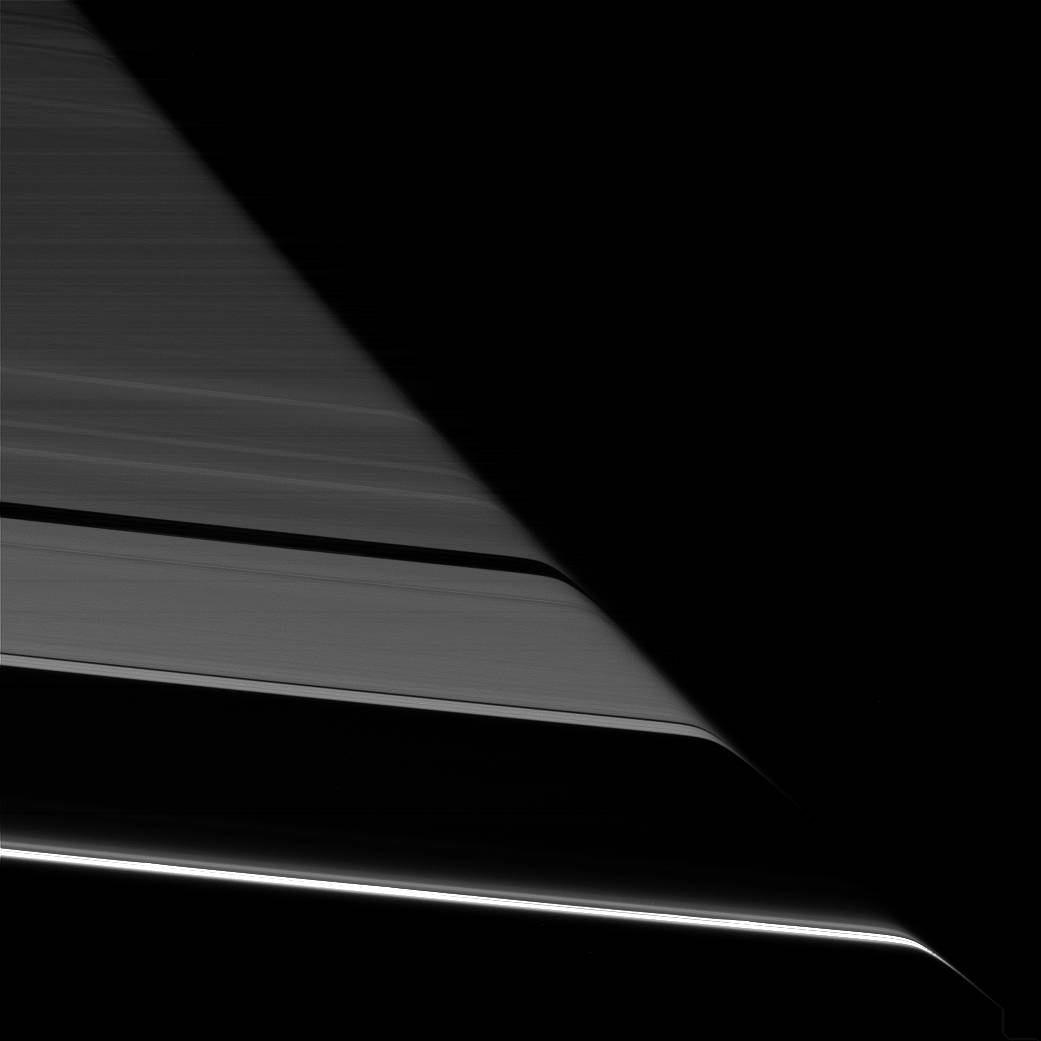Saturn’s rings appear to bend as they pass behind the planet’s darkened limb due to refraction by Saturn’s upper atmosphere.
The effect is the same as that seen in an earlier Cassini view (see PIA20491), except this view looks toward the unlit face of the rings, while the earlier image viewed the rings’ sunlit side.
The difference in illumination brings out some noticeable differences. The A ring is much darker here, on the rings’ unlit face, since its larger particles primarily reflect light back toward the sun (and away from Cassini’s cameras in this view). The narrow F ring (at bottom), which was faint in the earlier image, appears brighter than all of the other rings here, thanks to the microscopic dust that is prevalent within that ring. Small dust tends to scatter light forward (meaning close to its original direction of travel), making it appear bright when backlit. (A similar effect has plagued many a driver with a dusty windshield when driving toward the sun.)
This view looks toward the unilluminated side of the rings from about 19 degrees below the ring plane. The image was taken in red light with the Cassini spacecraft narrow-angle camera on July 24, 2016.
The view was acquired at a distance of approximately 527,000 miles (848,000 kilometers) from Saturn and at a sun-Saturn-spacecraft, or phase, angle of 169 degrees. Image scale is 3 miles (5 kilometers) per pixel.
Credit: NASA/JPL-Caltech/Space Science Institute


























